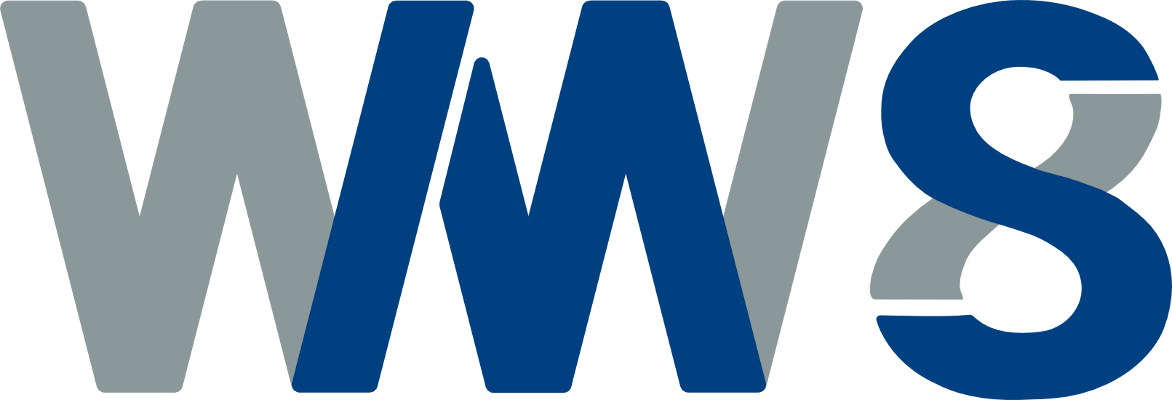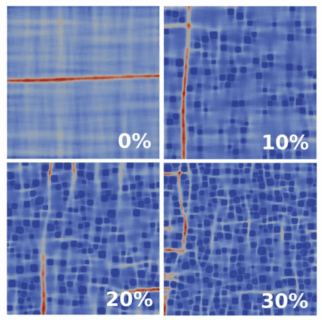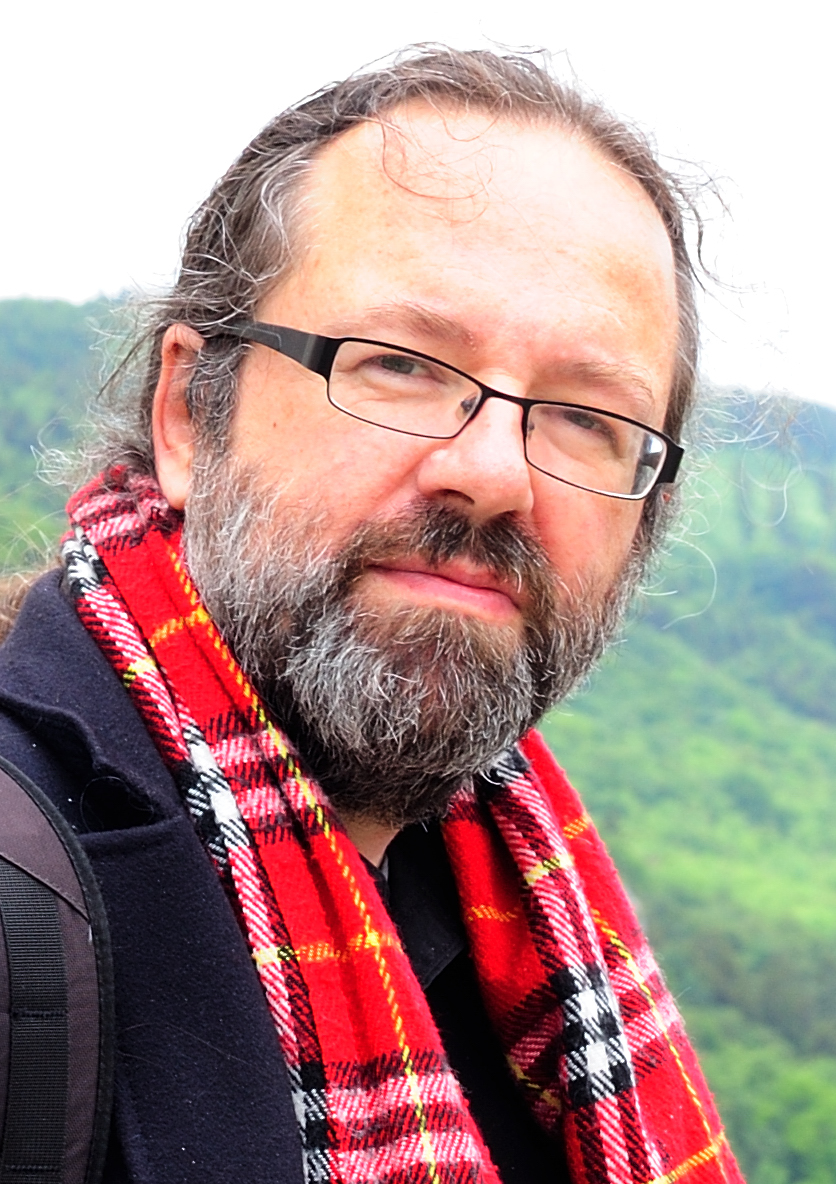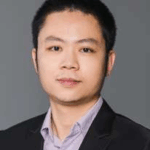PFMDM 2025
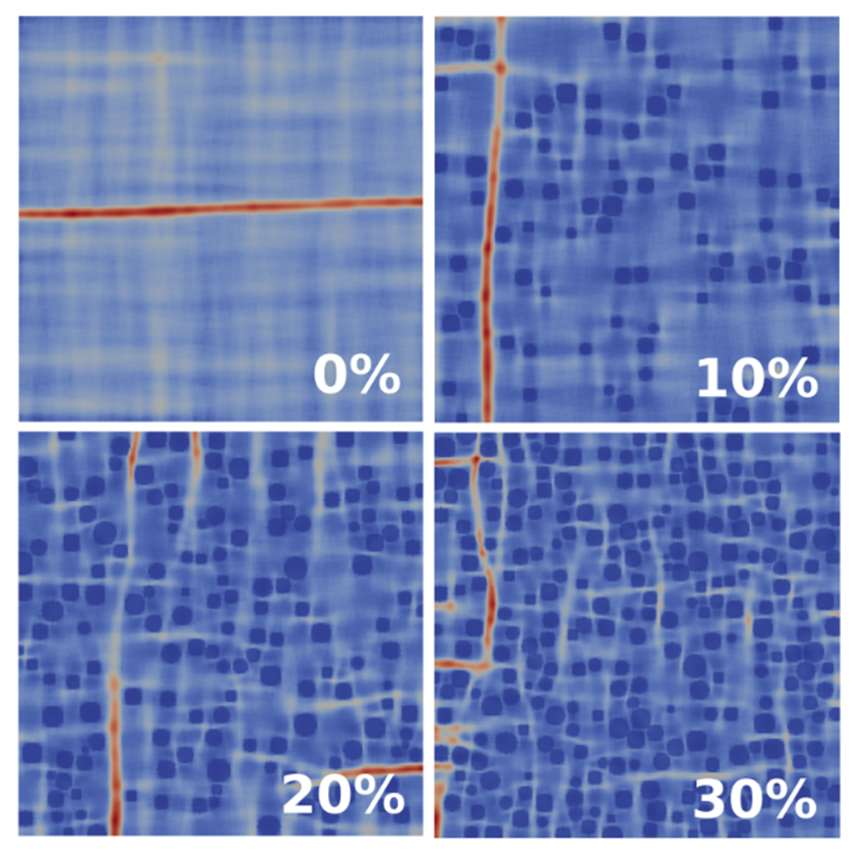
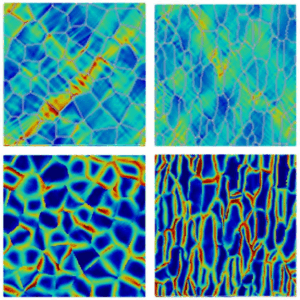
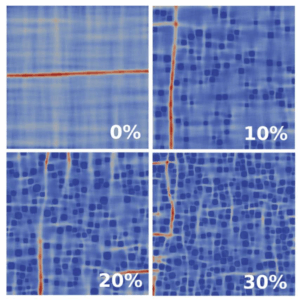 2025 Sino-German Symposium on Phase-Field Modelling of Defect Microstructures and Mechanics
2025 Sino-German Symposium on Phase-Field Modelling of Defect Microstructures and Mechanics
The Symposium on Phase-Field Modelling of Mechanical Behavior and Defect Microstructures (PFMMD) is organized within the framework of the Sino-German Mobility project “A unified phase-field approach for interactions between dislocations and other defects”, between the Chair of Materials Simulation, FAU Erlangen-Nürnberg, Germany and the Dept. of Materials Science, Northwest Polytechnic University, China.
The mechanical properties of materials are determined by the interactions between point defects (e.g. vacancies and solute atoms), linear defects (e.g. dislocations), planar defects (e.g. grain and phase boundaries) and bulk defects (e.g. voids, precipitates and cracks). Understanding and predicting the coupled evolution of defect microstructure and mechanical fields (stress, strain) during deformation and failure has been a long-standing challenge for the mechanics and materials community. Phase field approaches provide a conceptual foundation for treating defect microstructure and mechanical response in a unified continuum framework.
Related challenges include but are not limited to:
- development of phase-field theories of dislocations and/or crystal plasticity;
- formulation of damage and fracture models to correctly represent microstructural mechanisms
- continuum modelling of long- and short-range interactions between dislocations, grain and phase boundaries, and cracks;
- physically meaningful formulation of defect energy functionals and related thermodynamic driving forces, and use of multiscale approaches for parameterizing such energy functionals and mobility parameters;
- robust and numerically efficient implementation of phase field models. Addressing these challenges is the main objective of the above-mentioned Sino-Germany mobility program.
With this symposium, the organizers, are looking forward to discuss new ideas and novel methods within, but not limited to, the above topics.
Venue: Hotel Residenzschloss, Bamberg, Germany
Dates: October 9-12, 2025
Participation: There is no participation fee. Travel and accommodation expenses of participants with German or Chinese nationality and/or affiliation can be covered from project funds upon reasonable request.
Download Flyer Download Program
Organizers
Prof. Dr. Michael Zaiser
Chair Professor of Materials Simulation, Department of Materials Science and Engineering,
FAU Erlangen-Nürnberg
- Email: michael.zaiser@fau.de
Michael Zaiser is Head of the Institute of Materials Simulation in the Department of Materials Science and Engineering, University of Erlangen-Nürnberg, Germany. He got his Ph.D. in theoretical physics at the Max-Planck-Institut for Metals Research, Stuttgart, Germany. From 2001-2012 he served as professor and head of the Institute for Materials and Processes at the University of Edinburgh. His main research fields include dislocation theory, microstructure-based plasticity modelling, properties and design of metamaterials, deformation and failure of materials with amorphous or disordered microstructures, and data-driven approaches to materials design and property prediction.
He is German PI of Sino-German project “A unified phase-field approach for interactions between dislocations and other
defects”.
He has published more than 200 articles in peer-reviewed journals, including Science, Nature Physics, Nature Computational Science, Nature Reviews Physics, Nature Communications.
Prof. Dr. Ronghai Wu
Associate Professor , School of Materials Science and Engineering,
Northwestern Polytechnical University, China
- Email: ronghai.wu@nwpu.edu.cn
Ronghai Wu is associate professor at the Department of Materials Science and Engineering, Northwestern Polytechnical University in Xi’an, China. He got his Ph.D. in Materials Science and Engineering at the Friedrich-Alexander University of Erlangen-Nürnberg (FAU) in Germany. His primary research focus is on solving scientific and engineering problems related to material deformation, damage, and lifetime prediction using multiscale computational methods, including molecular dynamics, dislocation dynamics, phase field methods, crystal plasticity, and machine learning.
He is the Chinese PI of Sino-German project “A unified phase-field approach for interactions between dislocations and other defects”.
His publications include works in Journal of the Mechanics and Physics of Solids, International Journal of Plasticity, Physical Review B, Scripta Materialia.
Participants
- Prof. Dr. Michael Zaiser, FAU Erlangen
- Shucheta Shegufta, FAU Erlangen
- Yufan Zhang, FAU Erlangen
- Zeng Lei, FAU Erlangen
- Dr. Frank Wendler, FAU Erlangen
- Xuejian Wang, FAU Erlangen
- Prof. Dr. Markus Stricker, RU Bochum
- Gauravkumar Lathyia, RU Bochum
- Benjamin Udofia, RU Bochum
- Swetha Pemma, RU Bochum
- Sing-Huei Lee, KIT Karlsruhe
- Prof. Dr. Thomas Hochrainer, TU Graz
- Kevin A Pendl, TU Graz
- Prof. Dr, Dusan P Ispanovity, Eotvos Uni Budapest
- Dr. Jiaofeng Zhao, SWJTU Chengdu
- Ruilin Tang, SWJTU Chengdu
- Prof. Dr. Xu Zhang, SWJTU Chengdu
- Prof. Dr. Ronghai Wu, NWPU Xian
- Prof. Dr. Ye Feng, NWPU Xian
- Dr. Qichao Ruan, HIT Harbin
Technical Program
October 9 |
|
| 17.00-19.00 | Reception & registration |
October 10 |
|
9.00-12.40 |
Modelling dislocation microstructures and dislocation plasticity |
| 9.00-9.40 | Zeng Lei, FAU Erlangen Dislocation Pattern Formation in Polycrystals within Continuum Dislocation Dynamics |
| 9.40-10.20 | Niko Heinemann, Bernhard Heininger, Thomas Hochrainer, TU Graz Physics informed Koopman analysis of discrete dislocation data |
| 10.40-11.20 | Qichao Ruan, Esteban.P. Busso, Zhangchen Fan, Chao Ling, Dongfeng Li, HIT Harbin A Novel Continuum Dislocation Density Field-Based Crystal Plasticity Approach: Theory and Applications to Classical Boundary Value Problems |
| 11.20-12.00 | Gauravkumar Lathiya, RU Bochum Graph representations of dislocation networks |
| 12.00-12.40 | Yufan Zhang, FAU Erlangen, A Phase Field Approach to 3D Continuum Dislocation Dynamics: Application to Grain Boundary Interactions and Co-evolution |
13.30-17.50 |
Dislocations, deformation mechanisms and plasticity |
| 13.30-14.10 | Jianfeng Zhao, SWJT Chengdu, Strain gradient plasticity model with coupled first- and second-order gradient effects based on dislocation mechanisms |
| 14.10-14.50 | Peter Dusan Ispanovity, Eotvos Univ. Budapest, Length scales associated with dislocation avalanches and their role in continuum density descriptions. |
| 15.10-15.50 | Markus Stricker, RU Bochum Mesoscale plasticity modeling |
| 16.30-17.10 | Benjamin Udofia, RU Bochum, Automated identification of dislocation structures from experimental Laue microdiffraction patterns |
| 17.10-17.50 | Sing-Huei Lee, Katrin Schulz, KIT Karlsruhe, Continuum modelling of dislocation microstructures under tribological loading |
October 11 |
|
9.00-12.40 |
Microstructure-Based Models of Damage and Failure |
| 9.00-9.40 | Ye Feng, NWPU Xian Phase-field cohesive fracture models with strong displacement discontinuities |
| 9.40-10.20 | Ronghai Wu, Northwest Polytechnic University, A machine learning bridged multi-scale computational framework for microstructure correlated macro-cracking |
| 10.40-11.20 | Shucheta Shegufta, FAU Erlangen, Peridynamic modelling of disordered quasi-brittle materials |
| 11.20-12.00 | Xu Zhang, SWJTU Chengdu Coupled phase field modelling of crystal plasticity and damage in heterostructured materials |
| 12.00-12.40 | Swetha Pemma, RU Bochum Modeling properties of grain boundary phases |
| 14.00-17.30 | General Discussion: Role of phase field approaches for physically based materials modeling |
October 12 |
|
9.00-12.40 |
Mathematical Aspects |
| 9.00-9.40 | Xuejiang Wang, FAU Erlangen, Using Physically Informed Neural Networks for parameterization of phase-field models |
| 9.40-10.20 | Kevin A. Pendl, Thomas Hochrainer, TU Graz Phase-field Modeling of Void Nucleation: From Non-Classical Nuclei to Plasticity Effects |
10.40-13.20 |
Coupled Phase-Field Models |
| 11.40-11.20 | Michael Zaiser, FAU Erlangen-Nürnberg Towards a unified phase field model comprising dislocation microstructure, grain microstructure and damage |
| 11:20-12.00 | Ruilin Tang, Xu Zhang, SWJTU Chengdu, Hydrogen embrittlement in polycrystalline materials: A multi-field model coupling mechanical, chemical and damage fields |
| 12.00-12.40 | Frank Wendler, FAU Erlangen, Phase-field modeling of martensitic transformations in shape memory alloys: A review on mesoscopic approaches and their link to the macro scale |
